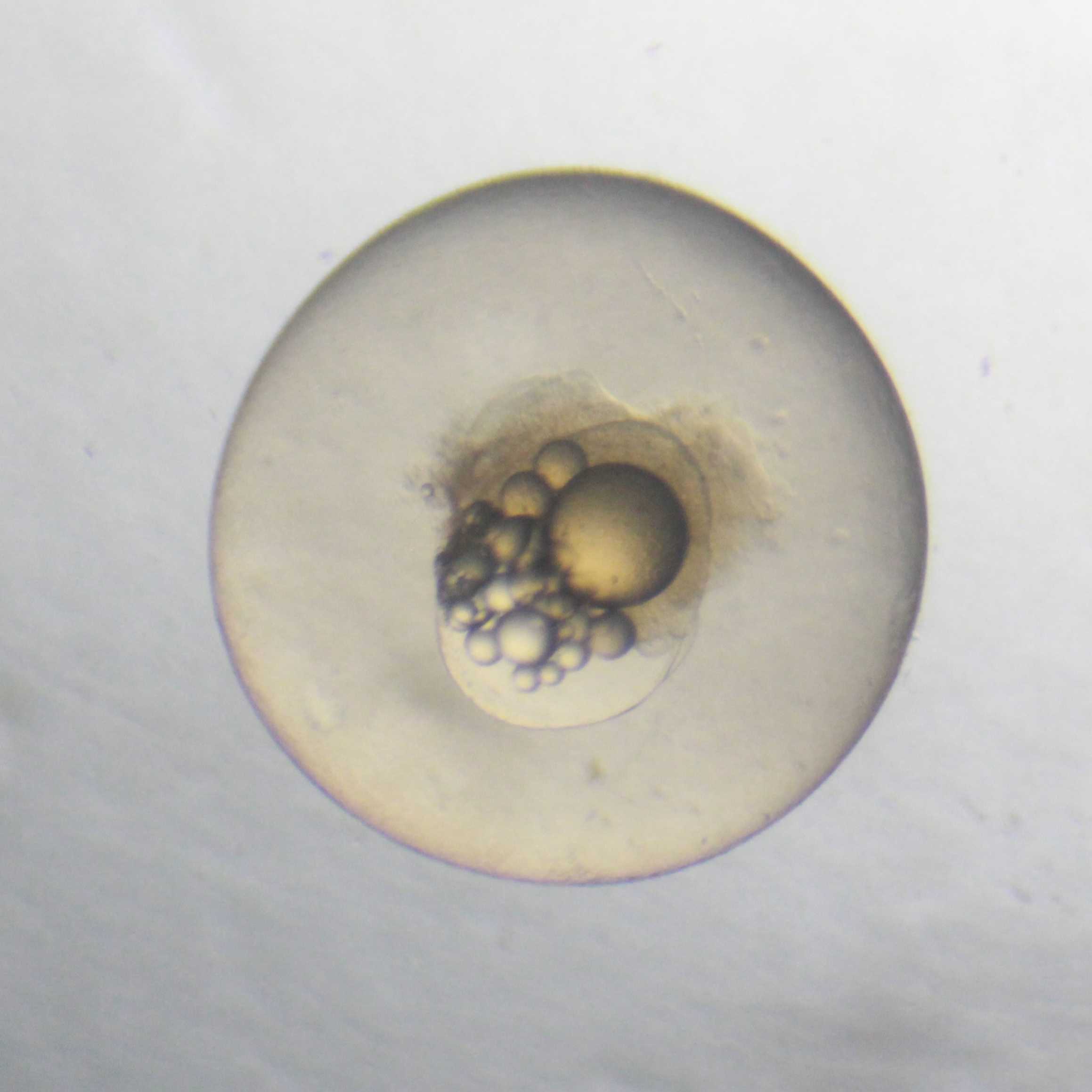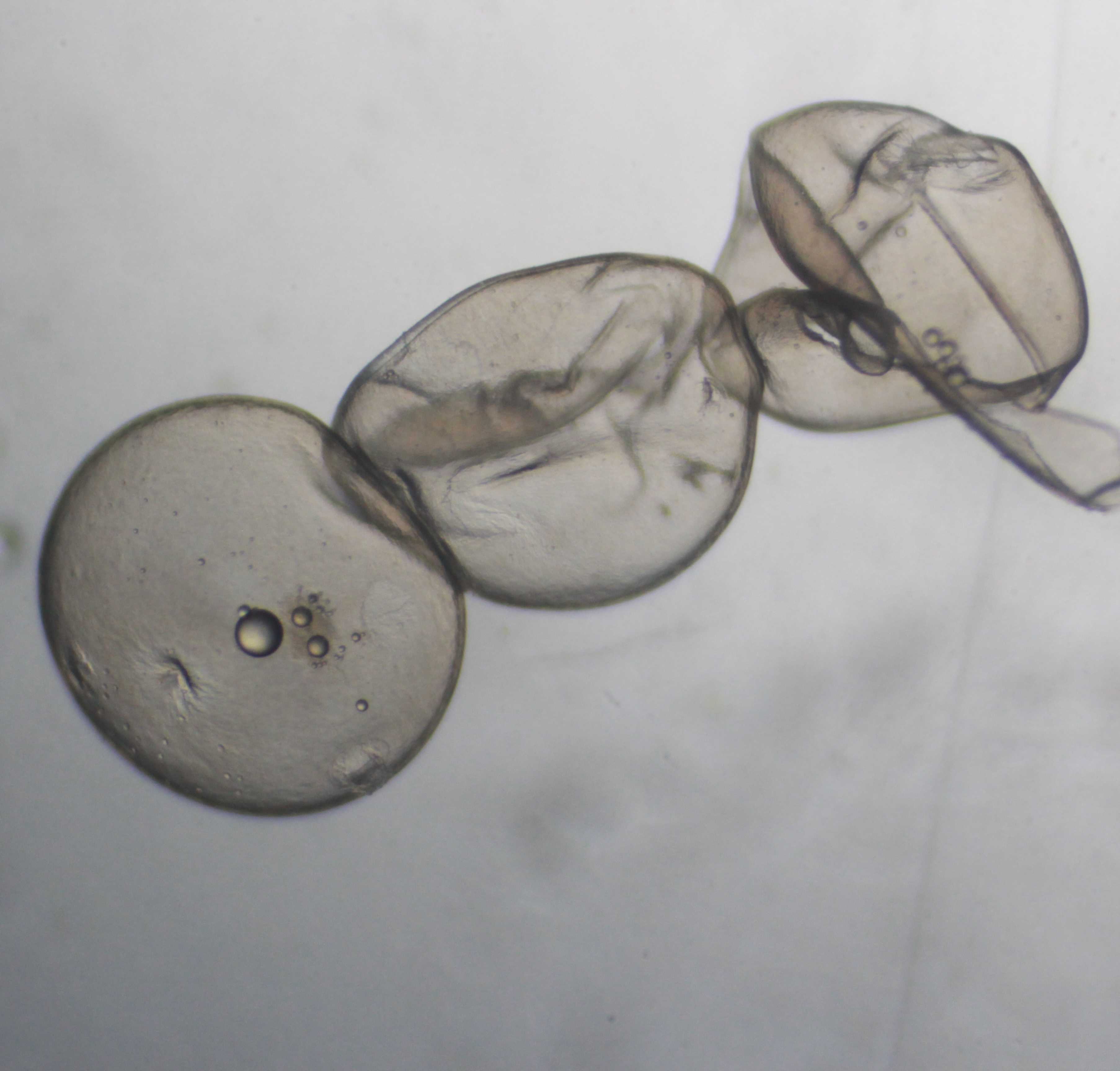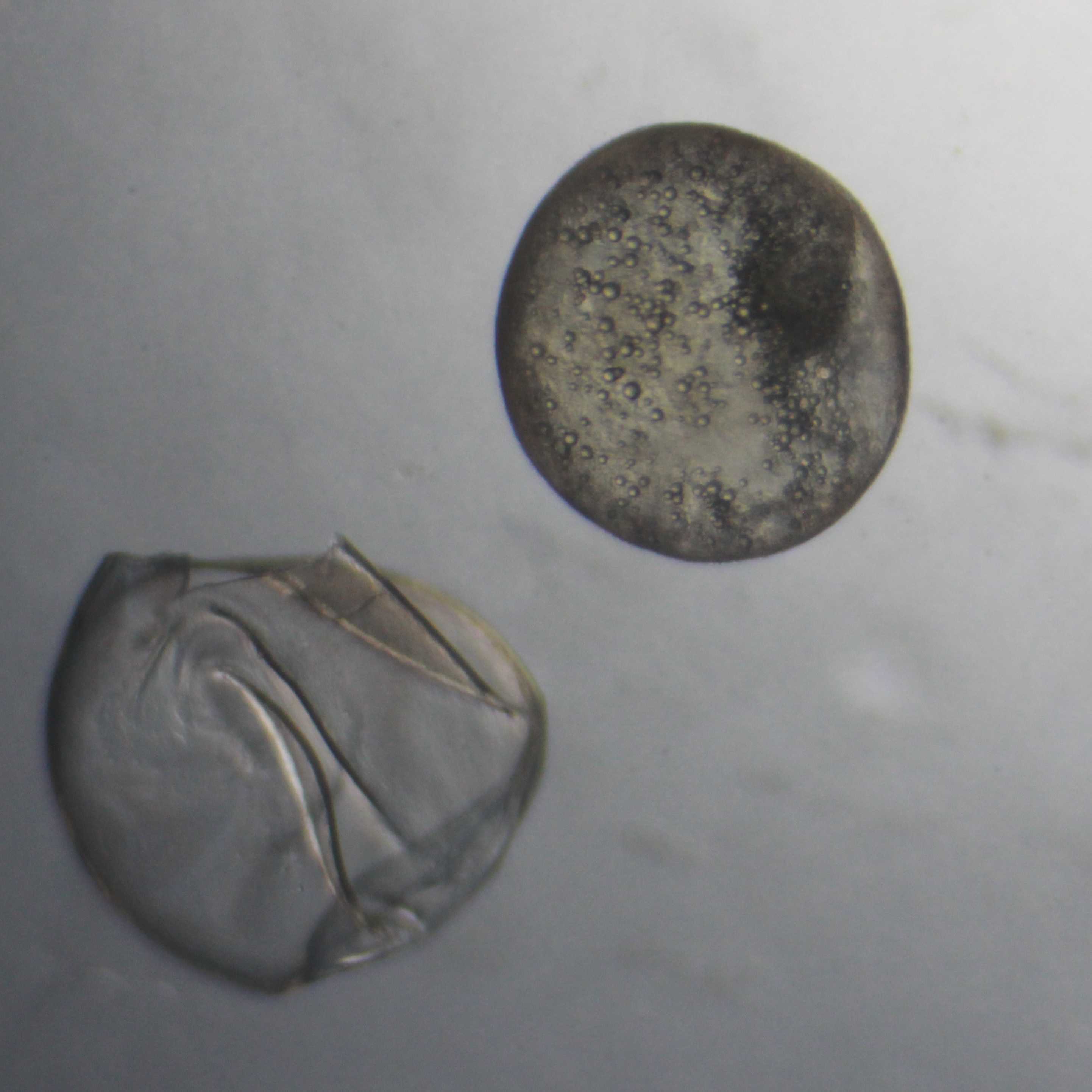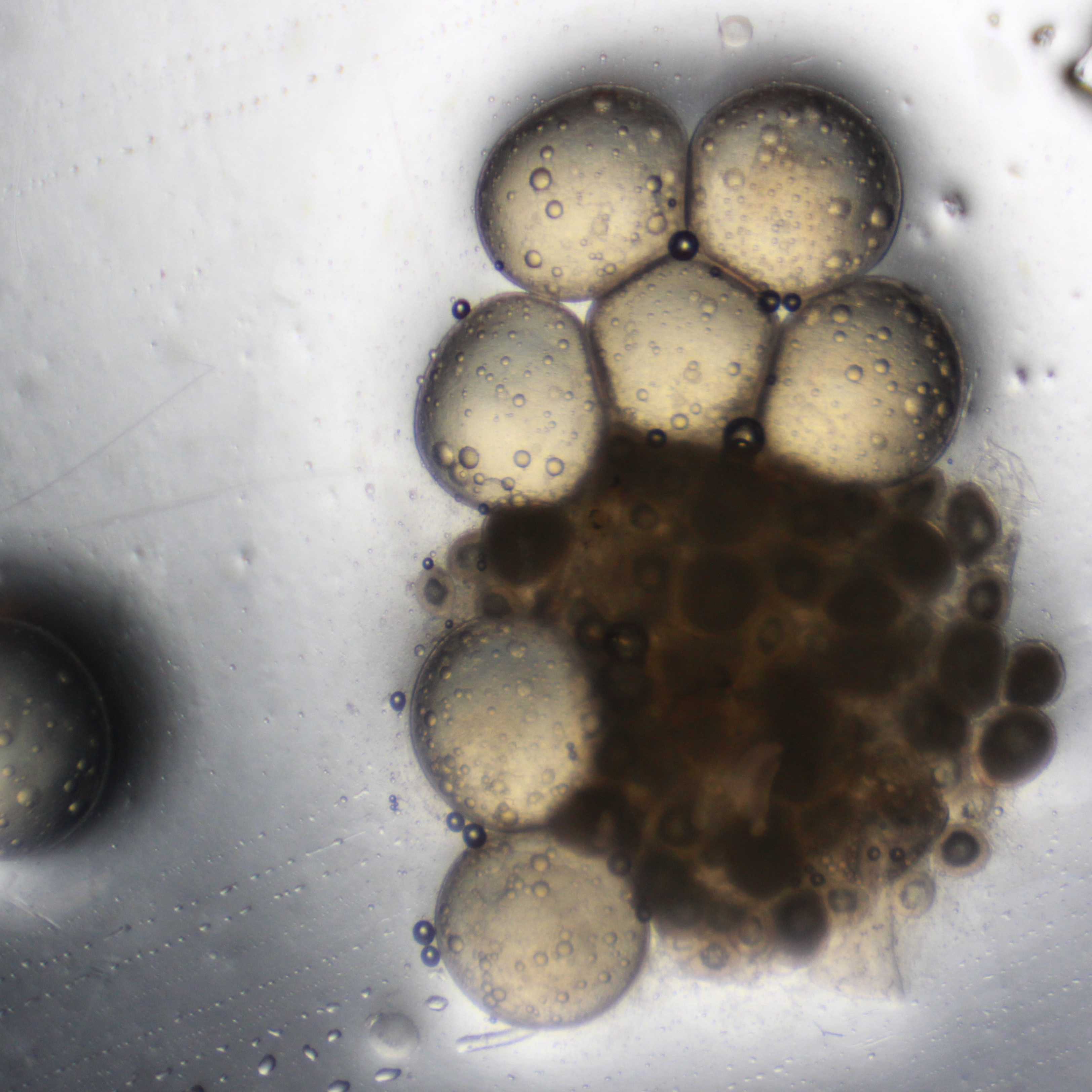Stickleback IVF Breeding (Clutch generation and maintenance)
Helen Spence-Jones
Disclaimer
Abstract
IVF generation of clutches of stickleback embryos from gravid females and males in breeding condition. This protocol requires euthanisation of the male and leaves the female unharmed.
Depending on source population, average fertilisation rates using this method are ~91% (range 76-96% between populations) and average hatch rates of fertilised eggs are ~90% (range 70-95%), with around one third of clutches showing 100% hatch rate. Incubation period depends heavily on temperature (e.g. 6-10 days at ~18°C, 21-30 days at 10°C).
Before start
Steps
Selection of breeding pair
Gravid female should have a distinctive swollen, ‘pebbled’ abdomen, with eggs visible through vent upon (very) gentle squeezing. Not much pressure is required to begin release of eggs; if too much force is required to start egg release, the clutch may be too early and is unlikely to be successfully fertilised. If the abdomen feels hard or 'grainy', the female may be egg-bound and the clutch too late/already spoiled.
Clutches that contain tiny white/brown (underdeveloped) eggs, blood or tissue from female, or eggs with opaque white/brown patches are bad quality and generally not worth fertilising.
Breeding males usually show colouration (turquoise eyes, red/orange chin and belly, red inner throat when mouth is open), but success is possible even if he is not displaying breeding colours. Males may be identified by a narrow 'slit' vent and slim, taut belly even when not in breeding colours.
In rare cases (more common in some populations), individuals showing evidence of breeding colouration may turn out to be female upon dissection.
Extraction of eggs
Prepare a petri dish with a 2-3cm diameter drop of embryo medium in the centre.
Catch female and gently hold her upside down over the petri dish, with one hand holding the tail to one side and the other with the index finger and thumb either side of the abdomen. Gently squeeze the abdomen until the eggs begin to 'pop' out. Use gentle strokes from the front end of the abdomen towards the vent to evacuate all eggs, allowing them to drop downwards onto the embryo medium.
Stray eggs can be manipulated using the female's tailfin or a soft paintbrush. Keep hold of her tail as she may otherwise flick eggs around!
The female may be measured before returning her to water, but care should be taken that this step is completed as quickly as possible.
Eggs should be sitting in embryo medium. In some cases, squeezing the female will also cause evacuation of faeces or urine alongside eggs, but this does not seem to affect fertilisation success and can be removed at this step or post-fertilisation. Eggs may be left in embryo medium for ~5 minutes before fertilisation, if necessary, but it is best to fertilise as quickly as possible.
Extraction of sperm
Euthanise male according to ethical guidelines. If overdose of MS-222 anaesthetic is used, this step should be done first so that dissection can be started as soon as possible after eggs have been extracted.
Prepare the lid of the petri dish with 1-2 drops of embryo medium in the centre.
Using dissection scissors, make two cuts: first, insert tip of scissors into vent and cut directly upwards though muscle wall. Second, cut horizontally from the first incision up to the lower edge of the fin joint.
Use fine dissection tweezers to pull out testes, which should lie on either side of the body just above the horizontal incision. Gripping testes by the base is most effective for removal (and in some cases results in both testes being removed at once). In rare cases, testes may be damaged by the initial cuts, but can still be removed and used.
Testes are long cylindrical structures resembling a grain of rice in shape and vary in colour from pearly white though grey-speckled to dark black. I have found no evidence that testes colour or size affects fertilisation success with this method.
Place testes into the drop of embryo medium and cut up using scalpel blade to release sperm into medium. 3-4 cuts per testis is usually sufficient.
Fertilisation of embryos
Using a pipette, suck up embryo medium + testes from the petri dish lid and drop onto the eggs in the dish. Swirl them together using the tip of the pipette for a few seconds to ensure all eggs come into contact with sperm.
Leave eggs + sperm to fertilise for 1-2 minutes (minimum 30s).
Remove excess embryo medium and bits of testes with a pipette. Rinse eggs thoroughly by pipetting embryo medium onto them and then removing the liquid. Repeat until the embryo medium runs clear (minimum of 3 repeats).
Eggs may be very 'slimy' at this stage and require many repeated washes before the embryo medium runs clear. This is always a good sign that fertilisation has occurred, although absence of slime does not mean that the clutch has not been fertilised.
Fill petri dish with enough embryo medium to cover the clutch, wipe clean petri dish lid and cover.
Checking, splitting, counting clutch
Optimally, any clutch manipulation should be performed after shells have hardened post-fertilisation (at least a few hours after clutch has been generated).
Once shells have hardened, it is possible to gently separate them using fine dissection tweezers. Lower closed tweezers horizontally between eggs that are stuck together, and then gently open them to split eggs apart. Grouping eggs into 5s or 10s makes it easier to count large clutches.
To move eggs, push them around using dissection tweezers or suck them up with a Pasteur pipette. Attempting to pick up eggs using tweezers requires extreme gentleness to avoid damaging them, but is possible.
All spoiled and unfertilised eggs should be removed to avoid spoiling of the whole clutch. This should be done the day after fertilisation; clutches should also be monitored to catch and remove spoiled eggs throughout development (daily or every 2 days).
Unfertilised and spoiled eggs can be identified visually, either by eye or using a microscope. Unfertilised eggs will appear unusually large and 'empty', without oil spots or with many tiny oil spots distributed around the egg. Eggs with opaque white or brown spots (or underdeveloped eggs, which are small, solid white) are spoiled and will not develop. 'Burst' eggs with damaged shells will also not develop. Spoiled eggs will often soak up more blue dye from the embryo medium, which makes them easier to identify.
To remove spoiled or unfertilised eggs that are stuck to healthy eggs, the 'crocodile roll' method can be used: with fine dissection tweezers, grasp the spoiled egg as close as possible to the part stuck to the healthy egg, then twist tweezers around to pull the spoiled egg free.
Clutch Maintenance
Clutch developmental time is strongly temperature-dependent and can vary between 5-30 days. Clutches should be monitored regularly, with any spoiled eggs removed (see above) and with embryo medium changed regularly to ensure hygiene and oxygenation. Care should be take to ensure that eggs are always covered with embryo medium.
At 18°C, clutches will take ~6-10 days to hatch, and embryo medium should be changed at least every 2-3 days.
Hatching period of a clutch is usually 1-3 days. Sometimes hatchlings may only partially break free from eggs, but it is generally best to leave them rather than trying to assist them in hatching. Hatchlings can be left in the petri dish (as long as there is enough embryo medium for them to swim) until all eggs have hatched, or removed using a pipette and transferred to fry tanks.






